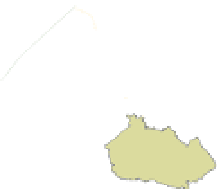Biology Reference
In-Depth Information
In the early days, the project experimented with eradication techniques
until it got the right combination of mechanical and chemical approaches,
applied during the most vulnerable stages of the pest's growth cycle. As
with any infestation, it's important to keep on top of new outbreaks. Ac-
cording to monitoring manager Ingrid Hogle, annual surveys show that
areas treated one year have a 50 percent incidence of reinfestation by inva-
sive hybrids, while treating areas two years running reduces that figure to
10 percent.
How does a patch of non-native spartina hybrid get from the edge of
Marin's Corte Madera Creek to a desktop computer in Berkeley? The long
way—via space. On a warm June day at Creekside Marsh, for example,
biologist Ode Bernstein spends a lot of time trying to stand in the right
position so that his small yellow handheld GPS unit can get a connection
to a satellite. If it's really poor, he puts the unit on top of his head.
Suisun Bay
North Bay
2004
2005
2006
2007
2008
Central Bay
South Bay
N
Southern
South Bay
0
5
10
miles
Map 17. Net acreage of invasive spartina by bay region from 2004 to 2008. These
data show the dramatic decline in net acreage from the Bay Area total of 776
acres at the height of the infestation in 2005, to less than 300 acres by 2008,
largely as a result of monitoring, eradication, and control programs. (Invasive Spar-
tina Project)



















































